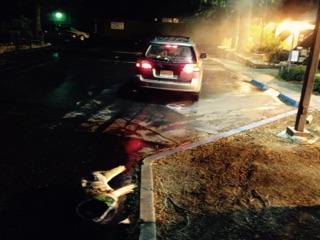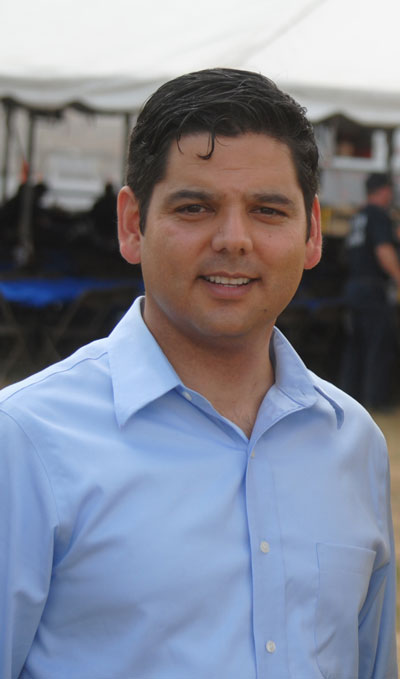CPUC accepting; energy safety office — not so
As the number of wildfires and their sizes grow throughout the state, both the governor and the Legislature have taken numerous actions, including new laws and greater oversight of public utilities. However, nothing has yet significantly diminished this threat to millions of Californians, including the thousands of residents on the Hill.
Since 2015, power lines have caused six of the state’s 20 most destructive wildfires. Consequently, the major state utilities have dramatically increased their use of one action — public safety power shut-offs — to mitigate wildfire potential.
While this preventive action is a useful tool during dangerous potential fire periods, such as high winds, extremely low humidity and drought, it also creates concurrent short-term problems for residents who have no electricity, but who need it.
For example, people who rely on medical equipment for life support are endangered without electricity to operate these devices.
Communication services become limited and residents do not know the full status and location or direction of wildfire conditions.
Consequently, the Joint Legislative Audit Committee directed the California state auditor to audit the California Public Utilities Commission (CPUC) and the Office of Energy Infrastructure Safety (OEIS). Michael S. Tilden, acting California state auditor, released the completed audit near the end of March.
While Tilden’s office saw improvements in the efforts of state utilities to reduce wildfire risks and conscientious efforts of the state agencies to oversee the utilities’ work, the report made several significant recommendations.
Besides suggesting the Legislature could strengthen several recently enacted laws, the audit recommended changes to procedures the CPUC and, especially, the OEIS employ to review utility mitigation plans.
One of the audit’s major concerns was the number of miles of power lines in high fire-threat areas and the means to designate the priority of all the potential strategies to mitigate work that would reduce these threats.
The states’ utilities have reported that nearly 75,000 miles of the state’s 277,000 miles of power lines are in high-threat areas. Nearly 40,000 miles of lines are still bare, which means they are either not underground nor have any protective covering.
Southern California Edison reports that 5,400 miles or 23% of its power lines are bare and in high-threat areas. However, Edison already has buried about 10,900 miles (47% of the total), which is by for the greatest proportion of any of the state’s utilities.
Bare lines are a major concern. The audit stated, “Nearly half of the fire incidents that utilities reported from 2015 through 2020 were caused by power lines coming into contact with foreign objects, including vegetation.”
In 2020, according to the audit, the utilities were able to improve only 1,540 miles of bare lines. At this pace, it would take 25 years to eliminate all bare lines. The auditor’s office made several recommendations to help the state agencies focus the utilities’ work in high fire-risk areas.
The first recommendation was directed to the Legislature to amend “… a 2022 law (shutoff reduction law) requiring utilities to identify circuits — sections of power lines within a utility’s electrical grid — that have been subject to frequent power shutoffs, and the improvements the utilities have already taken or plan to take to reduce the need for and impact of future power shutoffs.”
The second part of this recommendation addressed the utilities’ more recent use of modifying their settings, so that circuits are automatically shut down. While these unplanned power shut-offs reduce fire threats, they also have accompanying problems, such as no notice for the handicap to evacuate.
Since the law does not mention these types of shutdowns, OEIS does not believe it should address efforts to improve lines in these areas or to issue guidelines for using unplanned automatically generated shut downs.
The auditor also addressed several recommendations directly to the two state agencies. The first was to OEIS, recommending greater attention to areas of high fire risk and ensuring the utility’s prevention investments are being directed to these areas.
“In 2020, the Energy Safety Office approved utilities’ mitigation plans despite some utilities’ failure to demonstrate that they are appropriately prioritizing their mitigation activities… the guidelines for 2022 mitigation plans do not require that the utilities clearly delineate in their plans where mitigation activities will occur. As a result of this weakness, the Energy Safety Office does not assess whether utilities plan to conduct these mitigation activities in areas of highest risk for wildfire as a condition for approving their mitigation plans.
“Moreover, the CPUC conducts audits to determine whether utilities are in compliance with rules designed to ensure that they are operating safely, but those audits could be improved to better ensure such compliance, thereby helping mitigate the risk of utility‑caused wildfires.”
In general, the CPUC agreed with the recommendations. “The CPUC is committed to the continuous improvement of its operations. Accordingly, the CPUC will establish a corrective action plan and timelines toward implementing the recommendations identified in this report,” wrote Rachel Peterson, CPUC executive director, in her reply to the state auditor.
OEIS was less conciliatory in response to the audit. “… the ‘safety certification’ was not designed by the Legislature to be a backward-looking mark of approval (nor a reward to be withheld as punishment for past conduct).
“… If utility efforts are found to be lacking, Energy Safety will issue notices of violation and defect directing corrective actions… It is worth considering how the Report’s recommendation would alter the careful balance the Legislature struck in 2019 by transforming the safety certification process into a punitive enforcement tool and whether the structure of the safety certification process is well suited to be used as an enforcement tool.”
OEIS also stated, it “strongly disagrees with the Report’s characterization of its 2020 and 2021 mitigation plan evaluation as having ‘failed to ensure that utilities focus mitigation activities in the areas of highest fire risk.’ … The Report’s recommendation that Energy Safety designate prioritization of mitigation activities as a ‘critical issue that must be addressed before it approves mitigation plans’ fails to recognize the many factors that go into making such an evaluation.”







